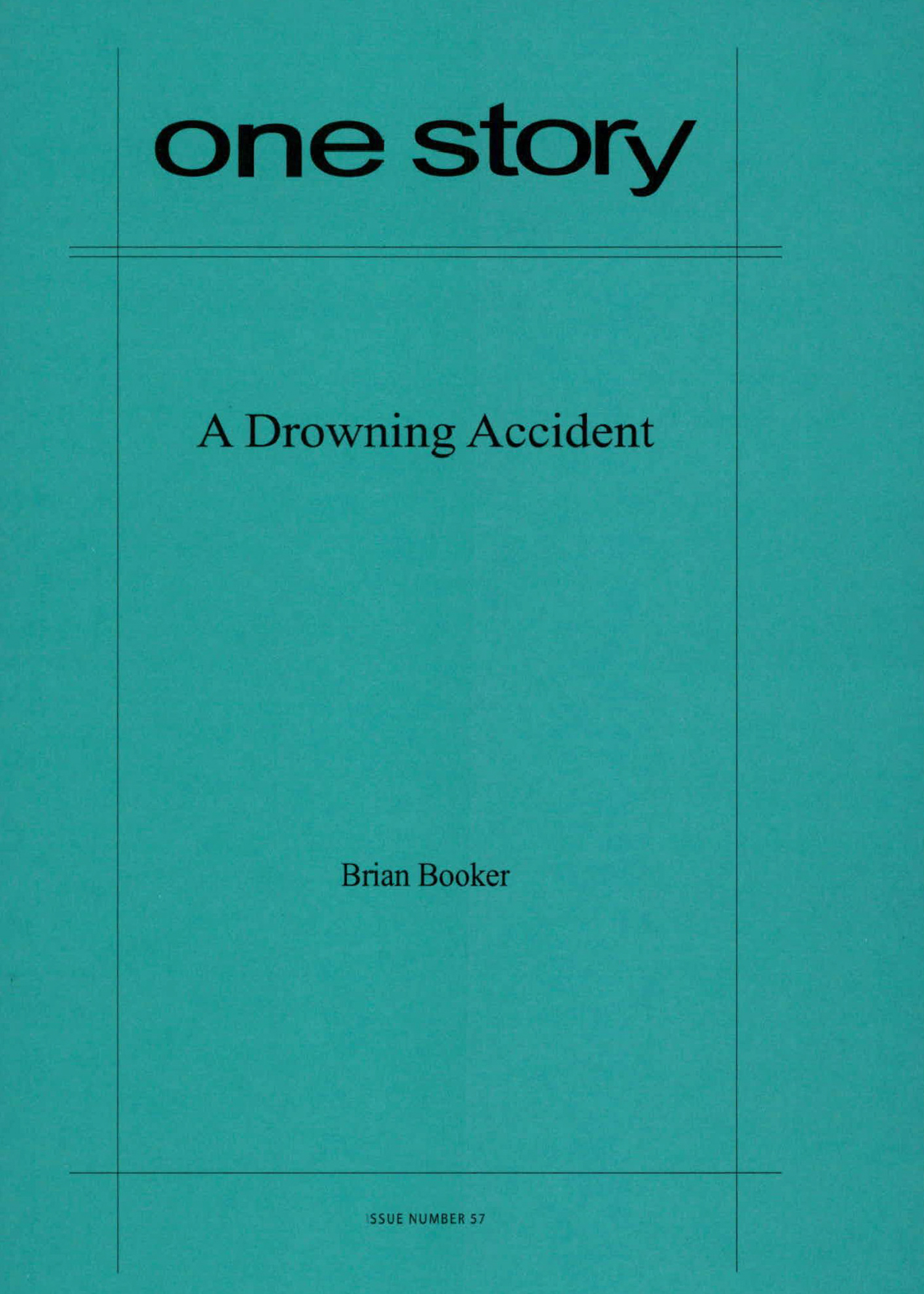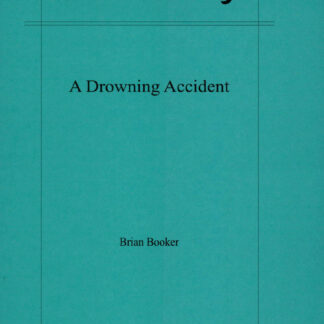
A Drowning Accident
$2.50
41 in stock
Excerpt
A tidal wave emerged from between two hills, reared up, and fell down on top of our town. It happened at night, and many people drowned in their sleep. The lake on top of the mountain above the town had never been much in people’s minds. They had been warned about trouble up there; but they’d been warned so many times, that perhaps they’d grown tired of waiting for a disaster that never happened—until it rained so much the earthen dam broke, and the lake came pouring down the valley. Growing up, I sometimes felt I was living among watery ghosts. I sought reassurance from my mother that the flood was in the past, long before I was born, and could never happen again.
My mother had three miscarriages before me. When I was a little boy, she and my father took me on a picnic up the mountain to the place where the lake had been. There was nothing but a wide depression in the ground. A solitary house, with a front porch with steps that led down to a field of grass, stood on the hill facing the depression. My father, a happy man who liked jokes and stories, said: “That was a lakefront house. And there were sailboats on that lake. Imagine—sailboats on the mountain! It seems impossible. But there they were.”
Brian Booker
Brian Booker’s fiction has appeared (or is forthcoming) in AGNI, The Antioch Review, New England Review, Shenandoah, Tin House, and elsewhere. His short story collection The Sleeping Sickness was a finalist in last year’s Iowa Short Fiction and John Simmons Short Fiction Awards. He lives in Park Slope, Brooklyn, where he makes art objects out of marine invertebrates, antique texts, and resin. He also teaches essay writing at New York University, and is working on a novel about a putative encephalitis scholar trapped on a train moving west to east (or east to west) through the wilds of Pennsylvania.
Q&A by Hannah Tinti
- HT: What was the most challenging aspect of writing this story?
- BB: When a story is set in the past—in this case, 1918—one risks blundering into anachronism. Details that are pure invention have to meet a standard of plausibility; they should blend seamlessly with historical facts gathered in research. I’m not sure I achieved that seamlessness, but that’s the challenge.
- HT: How did you come up with the setting? Where did you get the idea of a tidal wave falling down a mountain?
- BB: Several years ago I started visiting Johnstown, PA and learning about the Great Flood of 1889. I visited the Flood Museum, rode the Inclined Plane, went to the Flood Memorial. I walked around and took a lot of photographs and brought them back and they grew in my imagination. I discovered the Penn Hotel—which still exists, or seems to—on a lonely corner. The building, like the block, and like much of Johnstown, had a kind of weird, desolate beauty. Being there gave me a surreal, otherworldly feeling—similar to what the boy in the story experiences. The town, for reasons both cultural and economic, clings tightly to its memory of the Flood, and wandering around town it is not difficult to be overcome with the uncanny sensation that everything was—in a way, still is—underwater. As to the tidal wave, the Johnstown Flood did in fact involve an enormous wave—formerly Lake Conemaugh—crashing down into the valley after the South Fork Dam gave way. The lake literally fell down a mountain. Additionally, I had been reading a book about tsunamis, and the two images—flood and tidal wave—commingled in my thinking about the narrator’s nightmares and the way he lives with a feeling of disaster encroaching from both the past and the future. The other setting, at the seashore, stems from childhood trips to the boardwalk at Rehoboth Beach, Delaware. I also read a great book about the history of Atlantic City, although I haven’t been there yet.
- HT: Can you talk a little bit about ‘the sleeping sickness’ and your interest in it? Is this based on a specific epidemic?
- BB: My main source of information and inspiration was Oliver Sacks’ book Awakenings. Many people contracted the sleeping sickness—encephalitis lethargica—during the Influenza Pandemic of 1918-1919, when millions of people died from the flu. There were so many corpses that in some cities municipal buses had to be used as hearses. In the 1960s, Dr. Sacks used an experimental drug regimen to “awaken” patients who had been catatonic and paralyzed for decades following bouts of encephalitis. Some of these patients had no conception of how old they were, of the time that had passed since they became ill. These accounts seemed so suggestive and rich with metaphors for the dreamlike nature of life, the tenuousness and persistence of memory, and the awful possibility that at any moment we might wake up to a life that is unrecognizable. Our culture has mostly lost its memory of the flu pandemic, but that memory is now creeping back with books and news reports about the looming—some might say immanent—possibility of a new pandemic. Like the boy in the story, we may be faced with the prospect that what we thought was safely in the past and could never happen again, can in fact return—perhaps in some new, unanticipated form. This anxiety about disaster repeating itself relates back to the Johnstown Flood, because in fact that town suffered additional floods—in 1936 and 1977—though never so catastrophically as in 1889.
- HT: What is the significance of The Original Lucky Three Wise Men Dream Book?
- BB: I discovered the Dream Book by chance, and purchased it, in a convenience store somewhere along I-76 or I-78 in Pennsylvania. It was one of the strangest pieces of printed material I’ve ever come across. I had no idea what it was, but I knew that I loved it, and wanted to put it in a story. A few years later, after experimenting with various possibilities, the book showed up in “A Drowning Accident.” The Dream Book—which in its hokey way claims to interpret our dreams in terms of lucky numbers and codes—is meant to signify a liminal zone between nightmares and wishes, dreams and waking, past and future, accident and pattern. For a nervous, suggestible boy like William, it is an enticing and dangerous zone. Because the boy willingly seeks out this danger, he seems to lure (or be lured) by the fate, the sickness, which befalls him. The truth is that the sickness is an accident—and yet dreams can send us messages which suggest a different, more complicated truth about the meaning of our fates. In the same way, our fears and desires may project a sense of inevitability onto otherwise random, disconnected events.
- HT: Why did you choose to use newspaper articles and headlines throughout this story? How do they help William overcome his fears in the end?
- BB: I love digging through old newspapers. The headlines and stories are like little windows on lost worlds, past lives. They give us only a glimpse—a few facts, some details, often grim or violent—and leave the rest un-recounted, fodder for our imaginations. What is the connection to our own lives? The articles and headlines in “A Drowning Accident” serve a similar function for William: they show him tiny glimpses of the world around him; but they voice stilted half-truths (and sometimes lies) about the epidemic, and leave the rest to rumor, suspicion and fear. The headlines at the end of the story, in the context of William’s friendship with Mr. McCord, function differently—they give William a broader view of what has happened to him and what he has survived. His personal misfortune is not unique to him, not so personal after all; and that knowledge helps him feel less alone and less cursed. At the very end of the story—in the exchange between William and Mr. McCord—the headlines become purely imaginary. We have no control over the bad news which befalls us; but we can make up stories. It can be liberating, cathartic, to invent our own fake bad news.
- HT: How long did it take you to complete this story?
- BB: The story’s setting and atmosphere—scenes, moods, images—had been gathering for a few years in my notes, dreams and daydreams. One summer night, sitting in a bar, I conceived of the character and what might happen to him, and quickly wrote it down. Later that summer I sunk pretty deep into the story, and when I came up a few days later the first draft was done.
- HT: What is the best bit of advice about writing you have ever received?
- BB: I’m actually in the market for some good advice. For the moment, I’ll stick with Daniel Wallace’s sound suggestion: “not to die.”
- HT: What are you working on now?
- BB: Most of what I write tends toward the darkly comic and absurd. “A Drowning Accident” was more emotional for me, rather sober and ponderous. It’s probably my least funny story. And I’m not finished with the Dream Book yet. In my newest story—a kind of grotesque love story—the hero is the author of the Dream Book. Like the tramp in “A Drowning Accident,” he lives in the Penn Hotel. I think he is the happiest character I’ve ever written. I’m also working on a novel about an encephalitis scholar trapped (physically and/or metaphysically) on a train traveling interminably through Pennsylvania.
